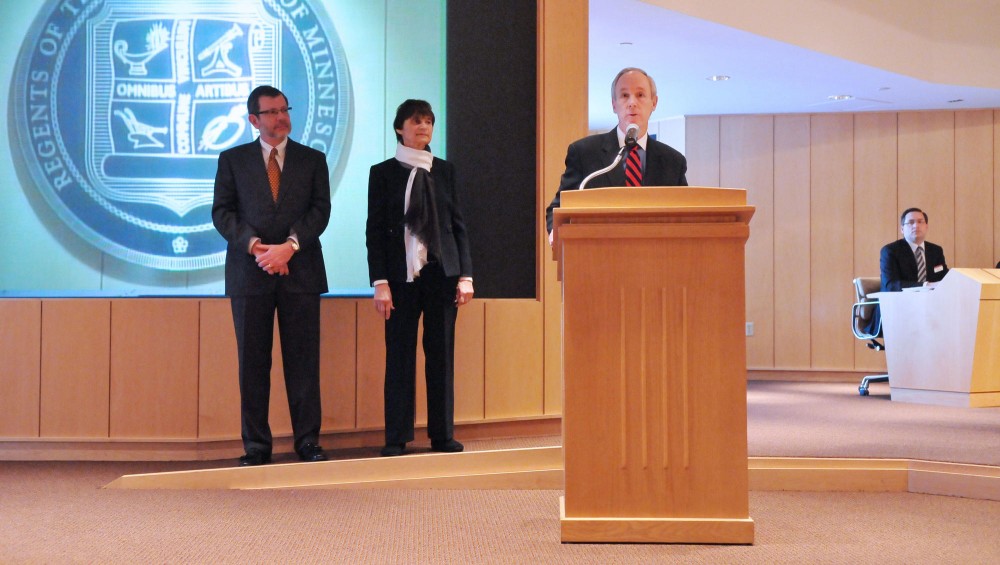The University of Minnesota took another move to reach out to the business community.
The University unveiled a new approach to make it easier for businesses to partner with it on research projects.
The University will now collect only a 1-percent royalty if a project makes more than $20,000 in one year. Before, âÄúfrustrating and uncertainâÄù royalty negotiations occurred after research was completed, according to a report presented to the Board of Regents.
Additionally, businesses will pay up front for an exclusive license instead of negotiating the terms on the back end.
It is widely believed that the new partnership plan, called Minnesota Innovation Partnerships (MN-IP), will smooth negotiations on intellectual property between the University and its research partners.
Vice President for Research Tim Mulcahy unveiled the plan at FridayâÄôs Board of Regents meeting.
âÄúWhat it basically says is: WeâÄôre de-emphasizing our interest in the financial return of the intellectual property,âÄù Mulcahy said. âÄúWeâÄôre more interested in the tangible and intangible benefits that come from a good relationship with companies.âÄù
Under MN-IP, companies that partner with the University on research pay up front for an exclusive license to the technology. The license would cost 10 percent of the sponsored research contractâÄôs cost, or $15,000 âÄî whichever is greater.
The changes in the royalty and licensing structures may result in less money per partnership, but it should bring in more research partners overall and thus increase revenues.
Mulcahy said he doesnâÄôt know of other institutions that have a similar approach, which he said values relationships over profits from businesses.
âÄúAs an active researcher, I spent years and years negotiating with companies for support of my laboratory,âÄù President Eric Kaler said. âÄúOften universities would fight to the death and you would end up owning 100 percent of nothing, because companies would simply walk away.âÄù
In 2010, the University began evaluating its approach by looking at other institutions and consulting with businesses. MN-IP is the result.
Members of the board also praised the new initiative.
âÄúGet out and tell the story, because this will excite the business community,âÄù said Regent David McMillan, who serves as executive vice president at Minnesota Power.âÄù
Research report
By most counts, the University has upped the ante in technology commercialization in the last five years.
University technology contributed to nine start-up companies in 2011. There were eight in 2010 and three in 2009.
But the dollar amount of research grants the University received has declined since last year.
In the past year, the University was awarded $769 million in sponsored research awards âÄî $54 million less than last year due to the loss of one-time stimulus funds.
Plus, competition for federal research grants has increased.
âÄúThe success rate at the federal agencies is dipping as low as 10 percent. That means for every 10 programs proposed, one is funded,âÄù Kaler said.
Despite the competitive funding environment, the University has fared well, Mulcahy said.
In 2010, the University placed eighth among its public research peers in terms of research and development expenditures. The University of Wisconsin-Madison was No. 2.


